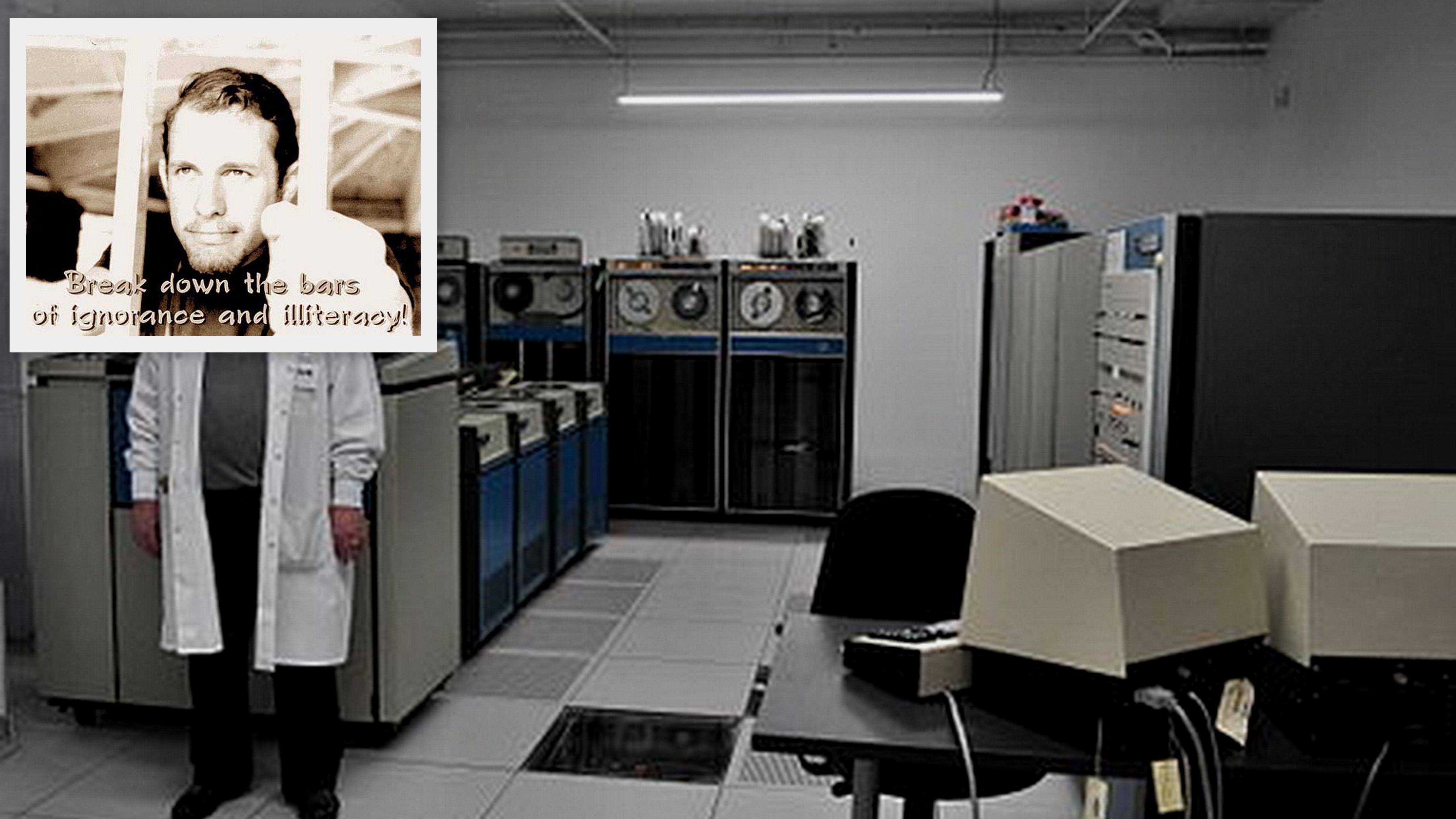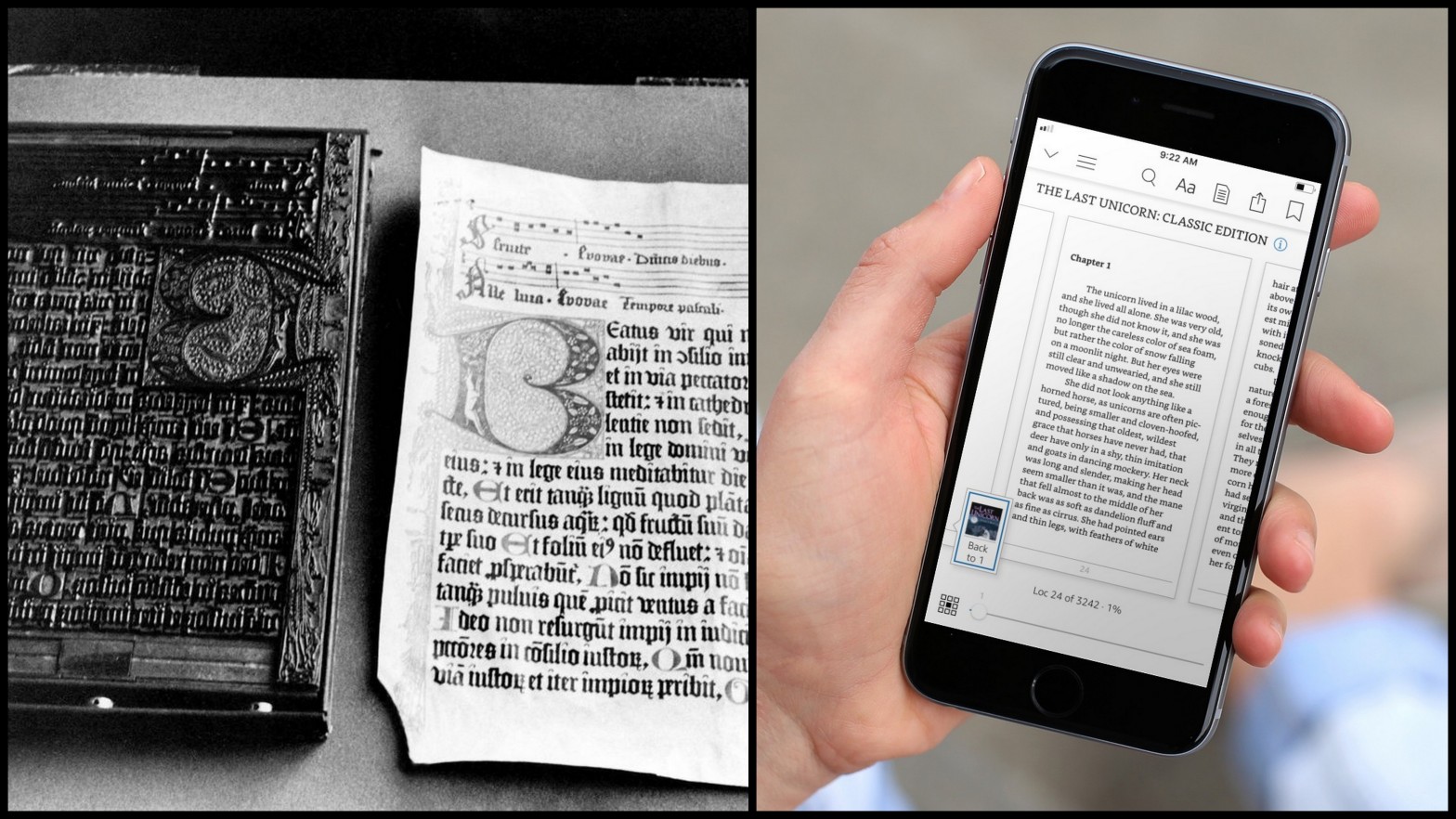Project Gutenberg is a volunteer effort to digitise and archive books and other cultural works and make them freely available on the internet.
It was started in 1971 by Michael Hart, a student at the University of Illinois.
The university had a Xerox Sigma 5 mainframe computer in their Materials Research Lab. By befriending the operators, Hart was given an account with a virtually unlimited amount of computer time; Hey! It was there and they didn’t really have a whole lot they could do with it. Everything was so new!

Seen above is a later Xerox Sigma 9 with a pic of Michael Hart pasted on.
Now, what would the average 24yr-old male do with this novel ‘thing’ called “access to a computer”? We know what most of us would do NOW: Search for titty pictures.

But there was no internet then, no World Wide Web. This would only come later, starting with something like this:
1973: Global networking becomes a reality as the University College of London and the Royal Radar Establishment of Norway connect to the American ‘ARPANET’. The term ‘internet’ is born.
1974: The first Internet Service Provider is born with the introduction of a commercial version of ARPANET, known as Telenet.
What Michael Hart did was amazing: He decided to just ‘make things available’ to anyone who could access them. As he added free content, his idea grew to wanting to encourage the creation and distribution of ‘ebooks’ – as many as possible in as many formats as possible for the entire world to read in as many languages as possible. The aim became ‘to break down the bars of ignorance and illiteracy’. His initial goal was to make the 10,000 most-consulted books available to the public at little or no charge, and to do so by the end of the 20th century.
He named the project after Johannes Gutenberg, the fifteenth century German printer who propelled the movable type printing press revolution which made knowledge more widely available.

There are now over 56 000 books available free on gutenberg.org. (March 2019: 58 000). (January 2020: over 60 000).
see wikipedia Project Gutenberg
~~~oo0oo~~~
Incredibly, the Sigma 5 base memory was just 64K Bytes. Maximum memory was limited by the length of the instruction address field of 17 bits, or 512K Bytes.


Thanks – interesting photo 😉 – oh and the project. I will go see if Playboy is included on the 56k most consulted books
LikeLike